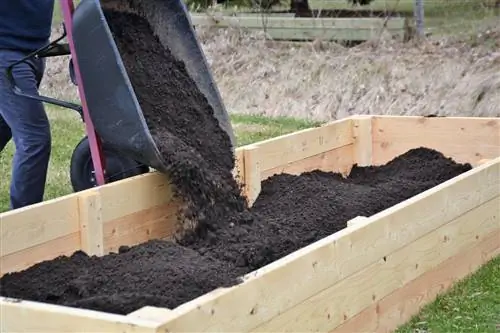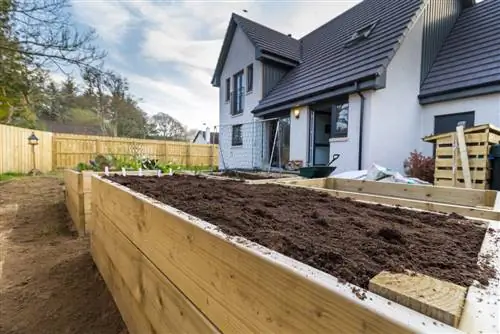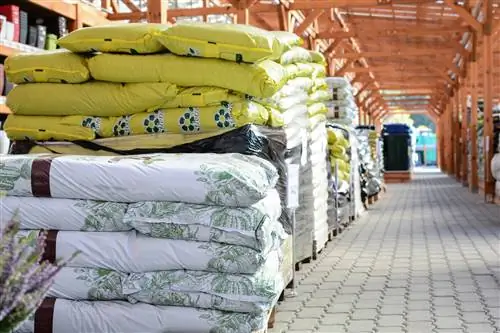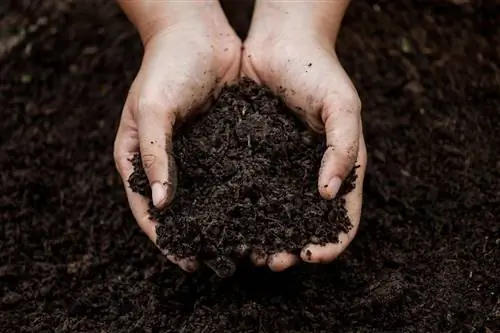- Author admin [email protected].
- Public 2023-12-16 16:46.
- Last modified 2025-01-23 11:22.
To ensure that your plants thrive, you should use the right, high-quality soil. Find out here what the difference is between raised bed soil and plant soil, what both are made of and whether you can also use good plant soil in raised beds.

What is the difference between raised bed and potting soil?
Planting soil is a soil mixture made from potting soil and consists largely of humus. The soil in araised bed is applied in layers and consists of compost and topsoil. Potting soil can be used as a top layer, also known as a cover layer, in raised beds.
What is the difference between raised bed soil and potting soil?
Good potting soil is particularly nutrient-rich and contains all the important requirements (well ventilated, water-retaining and dimensionally stable) for optimal plant growth. If you want to grow vegetables in your raised bed, you can also use organic potting soil as a top layer. There is also special soil directly for raised beds. This is peat-free or at least reduced and already contains fertilizer for the first few weeks. It consists partly ofscreened green waste compost and thus provides numerous important nutrients for the he althy growth of the plants in the raised bed.
Tip
Do not use raised bed soil for growing from seeds
If you want to grow your plants yourself from seeds, you should use high-quality potting soil. This is sterile and contains no weeds that could rob the young plants of space and nutrients. You should not use raised bed soil or compost soil for cultivation. These are usually too heavily fertilized for the small plants. Stronger and therefore more resistant roots develop in a nutrient-poor environment.






